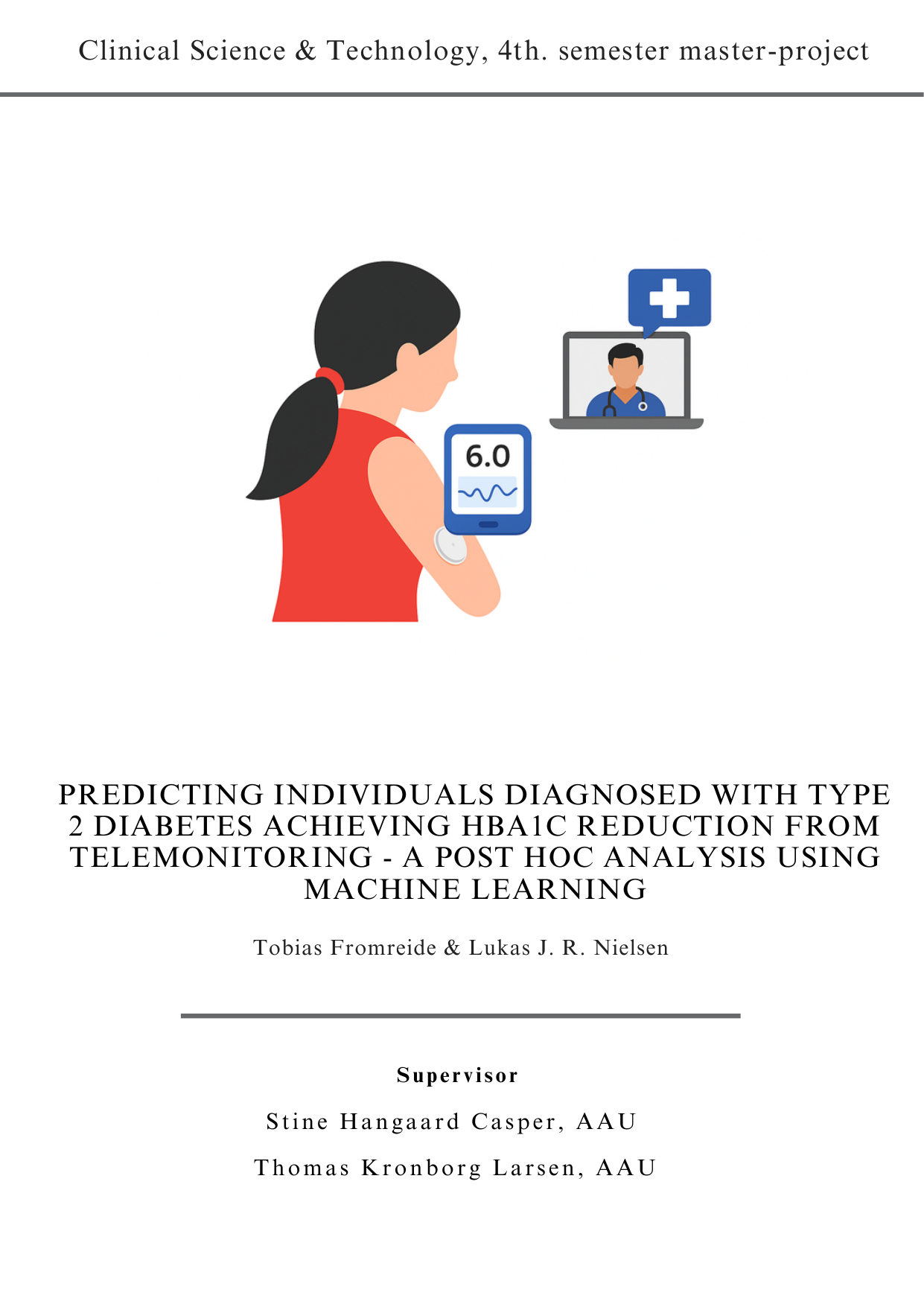
PREDICTING INDIVIDUALS DIAGNOSED WITH TYPE 2 DIABETES ACHIEVING HBA1C REDUCTION FROM TELEMONITORING - A POST HOC ANALYSIS USING MACHINE LEARNING
Translated title
FORUDSIGELSE AF PERSONER MED TYPE 2-DIABETES, SOM OPNÅR HBA1C-REDUKTION VED TELEMONITORERING - EN POST HOC ANALYSE MED MASKINLÆRING
Authors
Term
4. term
Education
Publication year
2025
Submitted on
2025-05-30
Pages
23
Abstract
Background and aim: Diabetes mellitus affects approximately 537 million people globally, with an expected rise to 643 million by 2030, posing a significant clinical and economic burden. Telemonitoring can improve glycemic control in individuals with type 2 diabetes mellitus (T2DM), but its effectiveness varies and implementation is costly, making targeted patient selection crucial. While machine learning shows promise in DM care, no existing models predict who benefits most from telemonitoring. This study aimed to develop a predictive model to identify individuals with T2DM most likely to respond positively to telemonitoring Methods: This post hoc analysis used data from the intervention group (n=163) of the DiaMonT randomized controlled trial. A binary outcome of ≥15% HbA1c reduction was defined. Missing data were imputed, and data stratified before being split into training and test sets using a 80:20 ratio. Features were selected using forward sequential feature selection with five-fold cross-validation and area under the curve (AUC) as the performance metric. A logistic regression model was trained on the selected features and validated on the test set. Results: Based on the forward selection a total of six features were included: HbA1c_baseline, Beta blockers, Opioids, DPP-4, GLP-1 receptor agonist and Hypoglycemia. The model achieved an AUC of 0.72, sensitivity of 0.80 and specificity of 0.56. Conclusions: A machine learning model based on DiaMonT trial data moderately predicted which individuals with T2DM achieved >15% HbA1c reduction from telemonitoring. The results support its potential for personalized treatment allocation, though further research is needed before independent clinical application.
Documents
